- Home
- Michael Chabon
Kingdom of Olives and Ash: Writers Confront the Occupation Page 31
Kingdom of Olives and Ash: Writers Confront the Occupation Read online
Page 31
It’s June 9, 2016, and I’m on my way to Rachel’s Tomb. I’m coming from Jerusalem, just as she did. I’m in a Kia and I’ve got a guide who says he’s an anarchist and a former Israeli Defense Force soldier. He looks a lot like Jesus Christ, or at least like the one painted in the sixth century in Saint Catherine’s Monastery on Mount Sinai, not the blue-eyed one hanging on the wall in my grandmother’s coal patch kitchen that was the handiwork in 1941 of an advertising illustrator from Chicago named Warner Sallman. That Jesus has sold five hundred million copies.
When we get close to Bethlehem I see the Wall looming ahead. I can’t help it, I feel the same reverential dread and awe I did five years ago. This side of the Wall around Bethlehem is pristine, no graffiti. We take a banked turn and all of a sudden the Wall is on both sides of us. I’m in a cement canyon. It curves for some time, and then we come to a three-way intersection. We’re here.
There are so many children. There are the soldiers, who have to be at least eighteen but look more like sixteen to me. They wear olive uniforms with heavy military gear sagging around their skinny waists. They suffer from acne, carry machine guns, and have expressions that convey that they know they should be serious but why should they because there are maybe ten new clean buses parked in the cement canyon intersection and pouring out of them are boys in yarmulkes doing what boys do, which is shoving each other, flinging themselves against each other, pointing, snarking, shouting, or moping. The point of being there is to do these things and not to go to Rachel’s Tomb on a class field trip. The point is to be noticeably cool or safely ignored. The girls are doing what girls the world over do. They stand in clusters watching the boys.
I can’t see the tomb. It’s behind a fortress that grows out of the Wall. My guide points to a red squiggle on the map, a Muslim cemetery, and a refugee camp called Aida. I look back at the scene on the ground. All of this—the special road, the walled canyon, the walled intersection, the fortress, and the soldiers—so Israeli schoolchildren can go to a tomb of a woman they believe symbolizes the holiest mother of Judaism and do so unmolested by Palestinian children throwing stones. It’s not that simple, according to politicians, diplomats, military analysts, historians, theologians and cultural critics, but it’s also that simple.
So let’s see what this tomb looks like. I go through the door for women. At first all I see is a small room with women seated on benches, mumbling Hebrew from palm-sized prayer books. One or two have their necks thrown back and the little books’ pages rest open on their faces, covering eyes, nose, and mouth. Some are up against a perforated screen and they’re davening so strenuously it looks as if the bitty books will start flying. Through the screen I see a sarcophagus covered in white satin. Some of the women remind me of Mennonites, the plain people of the Pennsylvania Dutch on my father’s side of the family. They wear turbans that look like bonnets, long gathered skirts, and prairie aprons. Some are praying to have sons because Rachel did after she was childless for a long time. Even so, just like Jesus’s manger, this may not be the spot Rachel’s buried. Some archeologists think she was buried north of Jerusalem near what is today called al-Ram.
I see the boys outside at the buses again and remember Moayyad al-Jawarish. His story is in a book about Bethlehem written by a former Newsweek journalist named Joshua Hammer. I recall how Moayyad lived just outside Aida camp, a few yards from where I am right now. It’s 2000 and he’s thirteen. He’s the son of an unemployed pipe fitter and the goalie on his junior high soccer team. His parents told him not to join a schoolboy march to Rachel’s Tomb to protest Israel closing it to anyone under forty-five. He promises them he won’t. But then, a cool kid from a tougher camp called Duheisha casually asks Moayyad if he’s going. It would be embarrassing to look weak in front of this boy. So he joins about four hundred boys with backpacks singing Palestinian songs as they walk-run towards the tomb. A boy from Duheisha camp smashes the windows of a Ford Transit van, sprinkles gasoline inside, and throws in lit matches. Quickly, Israeli soldiers surround the area. Their snipers get on top of a Kando gas station. Moayyad and his best friend are freaked out so they scramble to a field to lie on their bellies in the high weeds. But then Moayyad’s best friend gets a call on his cell phone: twenty soldiers are coming through the Muslim cemetery behind them. “Time to go home,” he tells Moayyad. They stand up and start running. Straightaway, his best friend doesn’t feel Moayyad beside him. He looks around, confused. Then he sees Moayyad, facedown in the weeds. What is he doing? Is he stupid? They need to get out of there. He yells at him to get up. He drops down to the ground, out of breath, spitting, “Moayyad!” Then he sees the blood, shiny and spreading in the yellowed under-grass. He bursts into tears. He doesn’t understand completely yet that a sharpshooter drilled a round into Moayyad’s head, a shot so precisely delivered that Moayyad was dead when he hit the ground.
I’m just outside Aida camp in Bethlehem, where Moayyad lived, on the other side of the wall. There’s a metal panel in the wall; when Israeli soldiers lift it by remote control, you find yourself at Rachel’s Tomb. Aida camp boys still come here from time to time to demonstrate. I look up and see cameras. Soldiers sit in Jerusalem and watch the boys. When needed, they use a slender cannon attached to the top of the wall near the electrified wire to spray the boys with a liquid called the Skunk. I experienced its aroma on a dirt road where boys demonstrate north of here. It smells like sewage and sulfur, and not surprisingly, skunk. The Israeli research and development company Odortec developed it in cooperation with the Israeli police department, to replace “conventional tactics—from physical force all the way to teargas and water cannons.” Its website says it’s nontoxic, organic, and drinkable.
I have a Palestinian guide now. This one is tall, gray, and distinguished. He reminds me of a professor, with his white polo shirt tucked into his pressed khakis. He says he was on this street walking during the weekly Friday demonstration when he got sprayed with the Skunk. He wasn’t throwing rocks. He was going to a store. It took multiple showers and three days’ time for the putrid stink to leave his body. He’s matter-of-fact about this. He’s not a complainer. As we walk he says he’s not so sure the Israeli soldiers prefer the Skunk over tear gas. “I went on YouTube and saw a video of them saying, ‘We will throw tear gas at you until all of you die—children, women, old people.’ And so on. I hear this myself coming from them. So that’s the kind of war we have over here.”
Now we’re inside the camp. It feels like a miniature town created especially for children—the United Nations first set up tents here, then concrete sheds thirty-four-feet square to shelter a family. Lots of them are painted sherbet colors to relieve the monotony. The bumpy road’s so narrow it doesn’t look like it was made for grown-up cars.
The hush comes from the fact that it’s a Friday during Ramadan. Everyone is fasting, not even letting themselves have a glass of water. They’ll drink and eat after sunset. I can sense everyone around me conserving energy.
Parents often excuse their children from fasting, so here are two boys huffing on bikes. One has training wheels. Four boys are playing marbles on the street near a manhole cover. A fourteen-year-old girl looks chic in black leggings and black T-shirt. She’s fasting. Are you hungry? She shrugs. “No.” Are you thirsty? She shrugs. “No.” What’s it like living here? She shrugs. “I like it.” What do you want to be when you grow up? She looks off into the near distance as if I’m an idiot. “A teacher.”
Farther along we happen on a friend of my guide. He’s what my miner grandfather would have called a working stiff. He hasn’t shaved and his beard is growing in with flecks of gray. He’s carrying two rubber hoses in his hand to fix his mother-in-law’s gas oven. And he has a story to tell. “The situation is very bad. My family were shepherds over there,” he says motioning to a place over the Wall, which has now reared up again to our right. An artist, not Banksy this time, has painted twenty-foot-high boys throwing rocks at the actual guard tower.
&
nbsp; “Our land was taken by the settlement of Efrat,” this working stiff tells me. “They confiscated it.”
How long did his family own this land?
“Since the time of the Turkish people.”
The Ottoman Turks ruled over the land where we’re standing from roughly 1486 until 1917, when they were trounced by the British in a brief campaign. When Israel was created in 1948, jurisdiction over the fields of this working stiff’s family fell to Jordan. In 1967, Israel defeated Egypt, Syria, Iraq, and Jordan in the Six-Day War, wresting the Gaza Strip and Sinai from Egypt and the Golan Heights from Syria. Jordan lost East Jerusalem and the West Bank, which contains Bethlehem and this man’s fields. That’s when the occupation, now in its fiftieth year, began.
I turn to my working stiff and ask, What’s been your experience with the settlers from Efrat?
He gestures west toward the water reservoirs associated with King Solomon of Ecclesiastes. “I was working near Solomon’s Pools. On building a new pumping station.” His tone is nonchalant. “The settlers from Efrat came,” he says. “They threw stones at me.”
Were you hurt?
“The settlers were there, so the Israeli soldiers came.”
That must have been a relief.
He shrugs. “Not really.”
Well, they protected you from the settlers.
“They came to protect the settlers. They hit me with tear gas and shot at me. I was lucky. I got away.”
Palm trees are swaying in the soft wind, lounge music is playing, and customers fill the round glass tables. Young Israeli Defense Force veterans are sharing stories about their tours of duty on the veranda of the Ambassador Hotel in East Jerusalem.
Yehuda Shaul, now thirty-three and a giant of a man with a bushy beard and steel-rimmed spectacles, served in Bethlehem in 2002 when settlers and soldiers attacked the working stiff. “We have settlers and Palestinians who operate under different legal systems. Even though under international law our mission is to protect the Palestinians. As soldiers in the field, our mission was not that. It’s to protect settlers.”
And yes, 2002 was also the year thirteen-year-old Hodaya died in the bombed bus. “It’s March, we call it Black March,” Yehuda begins his story. “Almost every single day a bus explodes in Israel and you can’t escape it. It’s a Wednesday night, Passover, there’s a suicide bomb in the Park Hotel, thirty Israelis are murdered. My phone rings. I’m called to duty. All of a sudden the doubts vanish. This is why we’re serving. To protect our country and get terrorists. Not protect crazy settlers.” His unit operated in Ramallah during Operation Defensive Shield and was later ordered to join different operations, among them the Deterrence Path operation in Bethlehem for three weeks in June 2002. One night stands out.
“We’re enforcing curfew. Driving the streets of Bethlehem in our armored troop vehicles. Nobody’s on the street, nothing’s going on. We come up on a Palestinian kid, four or five years old, eating watermelon up on a balcony. My deputy commanding officer says something like, ‘He’s collecting intelligence on us.’ I think, ‘He can’t be serious.’ Then he throws a tear-gas grenade at the kid.”
“Why?” I ask, startled.
“Why not?” Yehuda shrugs.
So it was sheer depravity? Maybe there’s something I’m not understanding.
“Sheer depravity.”
He goes on. “So we storm a house. In a few minutes the whole house was destroyed and broken to pieces. After fortysomething minutes we found a pistol and a cartridge from an AK-47. There was lots of excitement, ‘We found a weapon!’ The company officer shows up, he was a decent guy, he came in, I still remember I was standing at the entrance to the house, he saw all the destruction, he said to no one really, to himself, ‘Why does it always need to look like this?’ I heard him, I said to myself, ‘Wow. He’s completely right.’ I froze there for a minute and when we came back to the base he put the entire company in a room and he screamed at us and showed us a documentary about American officers who murdered a Vietnamese village in My Lai. And I was crying.”
Another person at the table wants to know about the everyday tension, not the dramatic incidents.
This time Ori Erez answers. He’s twenty-nine now and works as a plant biologist. “In my experience there was no tension, because imagine yourself, encountering, oh, I don’t know—a cockroach. Is there tension? You’re big and strong, and he’s . . . not. He can run away maybe, but in the end when it comes to one-on-one he doesn’t have a chance. That’s how I felt. I was always on the right side of the gun. And they were on the wrong side of the gun.”
Another vet who recently served, Dean Issacharoff, adds, “Look, you are being fed 24/7 that this is the single greatest thing that ever happened, that the Jewish nation can now—never again, like the Holocaust, never again—and you’re being shown how strong, how big and strong Israeli troops are and they are so good and righteous and do the right thing and so you never question it . . . I told it to my soldiers and I told it to myself and I actually believed it.”
My mother was the daughter of a Lithuanian coal miner, and she had no illusions about what our family would have done during the Holocaust if they’d remained in the rural town of Alytus instead of immigrating to Pennsylvania in 1905. Maybe she was realistic because she saw concentration camp newsreels when she was only thirteen. Throughout her life she read any book on the Holocaust she could find. I remember her sharing The Book of Sorrow by Yosif Levinson. He described how armed Lithuanians murdered 1,279 Jewish children, women, and men and disposed of their bodies in big trenches in the Vidzgiris Forest.
No matter where my mother was, she wanted to know how and why the unthinkable could happen. So when we finally went to Lithuania, she made a point to see the Vilnius prison where the Soviets tortured members of the Lithuanian resistance. We were there around the time the photographs of Abu Ghraib were released. As we stood in a cell with hooks on the walls where they hung prisoners, she said: All of us anywhere are capable of the worst.
A few years later, when my husband was wooing me, one of the first things he showed me was the letter on onionskin paper his father had sent to his mother when his unit was among those liberating Dachau. Milton gave Harriet every detail he could of what he witnessed, and he closed by saying, “If you see any of this in the newsreels, it’s true, it’s not propaganda.”
My husband’s family had immigrated to the Lower East Side of Manhattan at the turn of the last century. Relatives who hadn’t left Romania perished in the Holocaust. We decided one summer to see Auschwitz-Birkenau. We’d spent the day and at the end of it walked along the train tracks that led to the gas chambers. We paused as the sun set over the ruins of the crematoria.
We heard singing. We followed the sound, and it led us to nine or ten teenagers, who’d formed a circle with their arms on one another’s shoulders draped with Israeli flags. They stood on the charred ground and were singing the Hatikvah, Israel’s national anthem. Hatikvah means hope in Hebrew. The poem it was based on was written in Romania in 1877, not long after O Little Town of Bethlehem was composed.
Our hope is not yet lost
The ancient hope
To return to the land of our fathers
The city where David encamped.
To get to the settlement of Efrat from the city of David, a highway drive of fifteen minutes is involved. The Wall soars on the right. In the jumble of development, I learn to identify settlements two ways. They are built on hills and always have terra-cotta roofs. Maybe they’re trying to evoke Tuscany or Andalusian Spain. As the car zooms south, the vibe becomes sterile; thousands of identical domiciles accordion into the mountaintops, forming a ring around Bethlehem. If the block called E1 gets built as planned, they’ll reach to the Dead Sea, bisecting the Palestinian homeland.
The entrance to Efrat is west and south of Bethlehem. I realize as we drive up to the security booth that somewhere along the way the Wall disappeared. I see a pole barring our way attached
to the booth, but whoever’s in it doesn’t stop us, just flips the pole upward. I’ve seen better security in gated communities in Florida. We coast past landscaped terraces with majestic pine trees, delicate flowering bushes, weeping figs.
City Hall feels like Portland, Oregon; it’s thoroughly secular, satisfyingly rustic. To be honest, everything looks perfect. The hallway’s aglow with indirect lighting. Through a sequence of glass doors I see unremarkable people peaceably conducting city hall business in well-designed rooms. Here’s the mayor’s office. His secretary is wearing that long-sleeve T-shirt under a short-sleeve top I’ve seen around; it’s in fashion for Orthodox ladies. Her bangs poke out of a white knit beret that doesn’t do much for her. But she couldn’t be nicer.
She ushers me into Mayor Oded Revivi’s office, a corner one, with glass windows overlooking the planned splendor that is Efrat. A cobbled sidewalk disappears into a sea of green trees like the yellow brick road, while beyond it agricultural fields fall in graduated slopes along a valley to the horizon. A few clouds in the blue sky, but not many.
In comes the mayor. No signs of fanaticism, just a preppy button-down, navy trousers, and black loafers. It’s clear right off that Oded’s sort of handsome and definitely funny. He gets a satellite map of Efrat, and starts in.
“Established in 1983, with a city plan of being a city of thirty thousand people. Today in Efrat we have ten thousand people. It hasn’t reached its full potential yet.” But wait, after years of settlement building freezes under George W. Bush and Barack Obama, Israel declared some Palestinian land as “state land,” thereby performing the legal sleight of hand to make Efrat bigger and let it eat into the Bethlehem governorate. The Israeli government granted 1,100 permits for new dwellings, which, Oded shares, “is extremely unique and extremely outstanding. There’s no city in the whole of Judea and Samaria that got so many building permits. Some say because of my political connections. I tend to put that in doubt.”

 McSweeney's Mammoth Treasury of Thrilling Tales
McSweeney's Mammoth Treasury of Thrilling Tales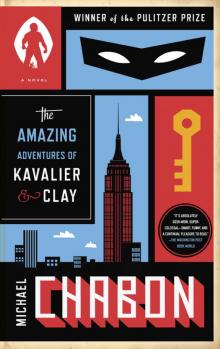 The Amazing Adventures of Kavalier & Clay
The Amazing Adventures of Kavalier & Clay The Yiddish Policemen's Union
The Yiddish Policemen's Union Wonder Boys
Wonder Boys Manhood for Amateurs
Manhood for Amateurs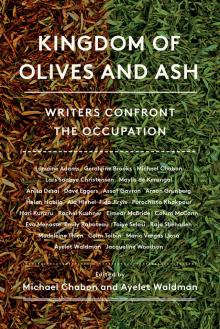 Kingdom of Olives and Ash: Writers Confront the Occupation
Kingdom of Olives and Ash: Writers Confront the Occupation Gentlemen of the Road: A Tale of Adventure
Gentlemen of the Road: A Tale of Adventure A Model World and Other Stories
A Model World and Other Stories Pops: Fatherhood in Pieces
Pops: Fatherhood in Pieces McSweeney's Enchanted Chamber of Astonishing Stories
McSweeney's Enchanted Chamber of Astonishing Stories Summerland
Summerland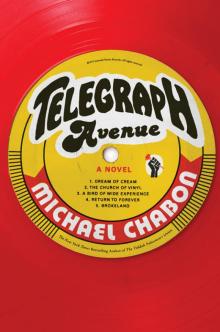 Telegraph Avenue
Telegraph Avenue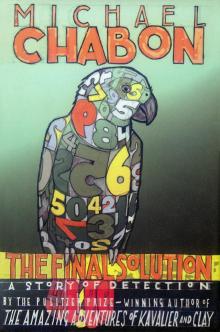 The Final Solution
The Final Solution The Mysteries of Pittsburgh
The Mysteries of Pittsburgh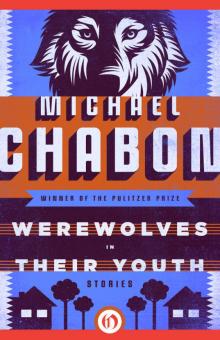 Werewolves in Their Youth
Werewolves in Their Youth Bookends
Bookends Fight of the Century
Fight of the Century Maps and Legends
Maps and Legends The Amazing Adventures of Kavalier & Clay (with bonus content)
The Amazing Adventures of Kavalier & Clay (with bonus content) Kingdom of Olives and Ash
Kingdom of Olives and Ash Pops
Pops Gentlemen of the Road
Gentlemen of the Road The Final Solution: A Story of Detection
The Final Solution: A Story of Detection Telegraph Avenue: A Novel
Telegraph Avenue: A Novel